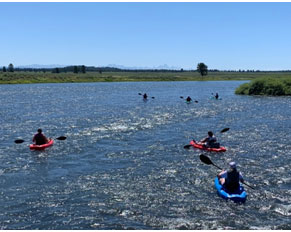The overall goal is to systematically understand the role that river and watershed organizations play in the social-ecological wellbeing of rivers and their local and regional contexts.

Objectives:
- Identify, document, and map river and watershed organizations in the Intermountain West
- Interview organizational representatives to build a robust dataset related to the missions, activities, and insights of these organizations.
- Systematically analyze data to address questions and publish findings
- Use insights gained from project analysis to inform partner identification and engagement for further TN efforts.
Charter Summary:
Over 400 river and watershed organizations were identified by this charter in the Intermountain West region that covers parts or all of 11 states. These organizations vary in scope, both in terms of geographic context as well as mission areas and are key actors related to resilience and positive transformations in the Intermountain West. Interviews were conducted with 240 organizations. Work concluded on this Charter on December 31, 2023.
Primary Contact
- Courtney Flint (USU)
Staff
- Bailey Holdaway (USU), 2021 – 2023
- Casey Trout (USU), 2021 — 2022
Graduate Students
- Brooke Richards (USU), M.S., 2022
Undergraduate Students
- Madison Fjeldsted (USU), 2022
- Caitlyn Rogers (USU), 2021 – 2022
- Shayna Pugh (USU), 2022
Publications & Products:
- Flint, C.G., Holdaway, B.M. River and watershed organizations in the U.S. Intermountain West: key actors in social-ecological resilience. Socio Ecol Pract Res (2023). https://doi.org/10.1007/s42532-023-00172-8
- Flint, C. G., Holdaway, B. M., & Rogers, C. S. (2023). Human–river relationships depend on human–human relationships: River and watershed organizations in three western US states. River Research and Applications, 1 –11. https://doi.org/10.1002/rra.4136
- Explore findings from this project here.